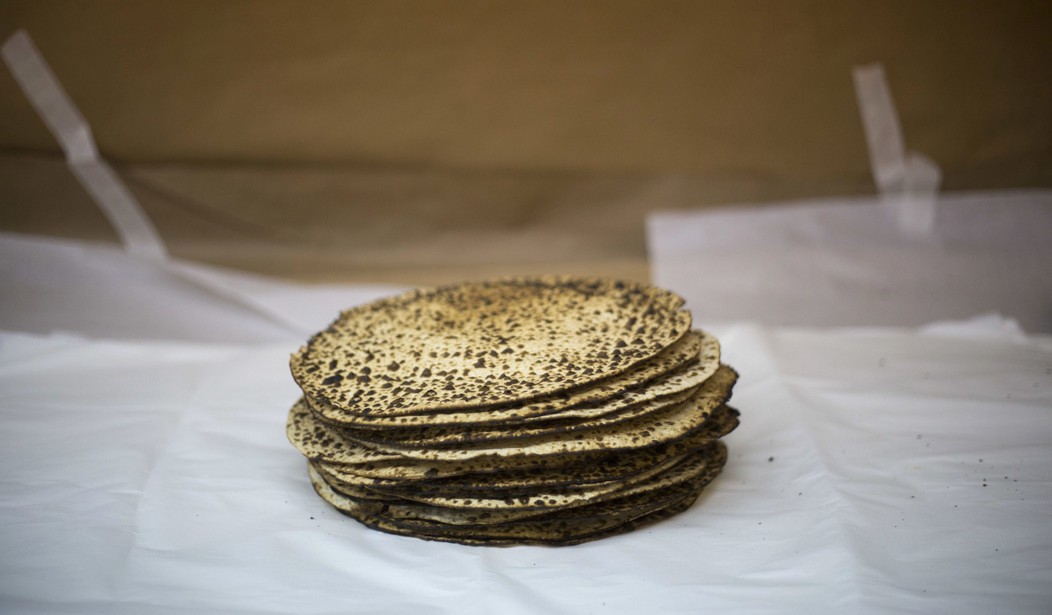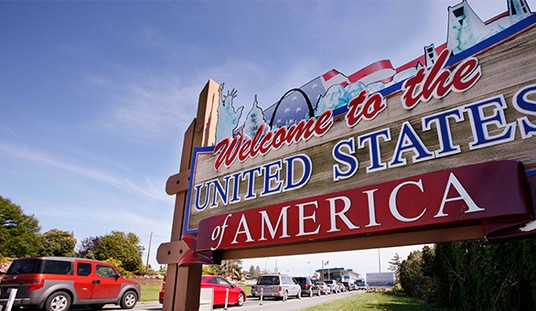The central rite of Passover, especially since the destruction of the Temple by the Romans, has come to be the ritual meal called the seder.
The literal meaning of the word is “order,” and the ritual is given form, texture, and order through a special book, the Haggada shel Pesach, which is read from beginning to end at the seder. The heart of the seder (and most of the text of the Haggada) is the discussion of various aspects of the Exodus from Egypt. Indeed the word haggada means “telling,” and its origin lies in the Rabbinic dictum kol hamarbe lësappér bitzi’ath Mitzrayim harei ze mëshubbach (“anyone who narrates a lot about the Exodus from Egypt is praiseworthy”).
A Rabbinic pun suggests that the essence of Pesach — Passover — is contained in the phrase pe sach, a “speaking mouth,” and to this end the Haggada has come to be one of the most beloved pieces of traditional Jewish literature, on which literally hundreds of commentaries have been written.
Over the years, I’ve collected many pages of notes on comments made at our sëdarim by various participants, and I would like to share some of those insights both for general interest and for inclusion, if you wish, in your seder this year.
The Haggada begins by detailing the highlights of the ritual with a set of terms known as the simanei haséder, or “marks of the seder”: Qaddésh, Urchatz, Karpas, Yachatz, Maggid, Rochtza, Motzi’ Matza, Maror, Koréch, Shulchan ‘Oréch, Tzafun, Baréch, Hallél, Nirtza.
Qaddésh (“Sanctify”): As with every other sabbath or holiday meal, the occasion is first sanctified over a cup of wine (the first of four consumed in the course of the night; a good discussion of the reason for the four cups of wine can be found here).
Urchatz (“And Wash”): This is followed by a ritual washing of the hands, however no blessing is pronounced. This hand washing is meant to symbolize the ritual washing done by the kohanim before entering into the sacred precincts of the Temple.
Karpas (“Vegetable”): At this point, we take a piece of vegetable (we generally use boiled potatoes; I’ve seen other people use items as diverse as parsley and celery), dip it into a mixture of salt water, make the blessing boré’ përi ha’adama (“Creator of the fruits of the Earth”) and eat the item. Have in mind that this blessing should also apply to the maror later.
Why do we do this? A simple answer is that the salt water symbolizes the bitter tears shed during the harsh Egyptian exile. The word karpas signifies no particular vegetable, and at least one commentator suggests that it alludes to the proximate cause of the exile, the drama surrounding the sale of Yoséf by his brothers into Egyptian slavery. Yoséf, he observes, was nimkar (“sold”) because of the këthoneth hapassim (“coat of stripes”), and the word is constructed of these two syllables.
There are also much deeper explanations.
Yachatz (“Break”): At this point, the person conducting the séder turns his attention to the three matzoth lying before him. He grasps the three matzoth and splits the middle one into two pieces, the largest of which is hidden away for the Afiqoman at the end of the meal (in our household, the little children search for it; if they find it, they hold it hostage for a prize; this keeps them engaged, so that the adults can get on with the séder).
Why do we do this? It is in memory of the covenant made between G-d and Avraham known as the Bërith béyn habëtharim (“covenant between the halves”), when Avraham split sacrificial animals in half and walked between them; it is in the merit of the covenant with the Patriarchs that our ancestors were rescued from the Egyptian exile and granted the Torah.
Maggid (“Telling”): Here begins the actual Haggada, the telling of the Exodus from Egypt. This opens with a statement in Aramaic which begins: Ha lachma ‘anya di achalu avhathana bë’ar‘a dëMitzrayim (“This is the poor bread which our fathers ate in the land of Egypt”).
There are many reasons adduced for why this is in Aramaic, when the rest of the Haggada is in Hebrew. One suggestion, made by the Chida, is that the ultimate cause of all the problems lay in the peace which Ya‘aqov made with his father-in-law, Lavan, memorialized by the erection of a cairn of stones called, in Aramaic, Yëgar Sahadutha (“the Hill of Testimony”). The gimatriya or numerical value of the phrase is equivalent to: ‘al da galutha dëMitzrayim (“Because of this was the Exile of Egypt.”).
The phrase lachma ‘anya, “the poor bread,” is also the subject of a rabbinic pun: lechem she‘onim ‘alav harbé (“bread upon which we answer many things”), another allusion to the mitzva of sippur bitzi’ath Mitzrayim.
This is followed by the very emotional Four Questions, traditionally memorized and asked by the youngest child present who is able.
How is this night different from all other nights? On every other night, we eat leavened and unleavened things, tonight, only unleavened things. One every other night, we eat other vegetables; tonight, we eat a bitter herb. On every other night, we don’t necessarily dip anything; tonight, we dip twice. On every other night, we eat either sitting or reclining; tonight, we recline.
Why four questions? The Targum Yonathan sees in them an allusion to the four major exiles endured by the Jewish people: Egypt, Babylon, the Greek exile, and the current Roman exile. The redemption from Egypt is the paradigm for the redemption from all of them.
The Haggada then tells the story of four rabbis who conducted a séder in the ancient city of Bënei Bëraq, Rabbi Yëhoshua‘, Rabbi El‘azar ben ‘Azarya, Rabbi Tarfon, and Rabbi ‘Aqiva, who spoke of the Exodus until it was dawn and time for the morning prayers. Why are thee four specified, other than that they are great figures of the Talmud?
Because Rabbi ‘Aqiva was the son of converts, Rabbi El‘azar and Rabbi Tarfon were kohanim, and Rabbi Yëhoshua‘ was a Lévi. None of their direct ancestors had been subject to the physical enslavement in Egypt, yet they still participated in the spiritual redemption; it is that spiritual redemption which is the more important one being celebrated here.
We then tell of four sons: one wise, one wicked, one simple, and one who doesn’t know what to ask. In each case, there is a different approach to telling the story of the Exodus, each symbolizing the variety of approaches necessary at the various levels of understanding and education people have.
The Haggada goes on in this vein, telling the history of the Jewish people. We’re reminded that Lavan sought to uproot the entire Jewish people at the very beginning, whereas the Egyptians only decreed death for the boys, and that the solution to the problem of Lavan was Vayered Ya‘aqov Mitzrayma (“And Ya‘aqov descended to Egypt”). This appears to ignore the entire period between his parting from Lavan and his descent to Egypt. Why?
Rabbi Dr. Mé’ir Lehmann suggests a reason: The entire time that Ya‘aqov and his sons were in Canaan, he had to be very careful how he dealt with them, for if any should become truly annoyed he could proclaim he was going back to Grandfather Lavan — and the basis of an entire tribe of Israel would have been lost. But once they entered Egypt, the Egyptians slammed the door shut and sealed the border to prevent their leaving. Now Ya‘aqov could speak as frankly and honestly as he needed, and they couldn’t go anywhere.
And so on through the catalogue of the Ten Plagues, the song Dayyénu (“It would have been enough for us”) detailing all the miracles done for the Jewish people by G-d, and many other memorable passages, concluding with a blessing boré’ përi hagafen (“creator of the fruit of the vine”) and the drinking of the second cup of wine.
Rochtza (“Wash”): We now wash our hands with a blessing, preparatory to the rest of the séder. Other than blessings and required readings, there is no talking over the next few stages.
Motzi’ Matza (“Bringing out the Matza”): The one conducting the séder takes the three matzoth in his hands and makes the blessing hamotzi’ lechem min ha’aretz (“Who brings bread forth from the Earth”), puts the third down, makes the blessing ‘al achilath matza (“concerning eating matza”) and breaks the top one and the one in the middle, distributing the pieces to everyone at the séder. They are eaten quickly while reclining.
Maror (“Bitter herb”): Again, in memory of the bitterness of the Egyptian exile, we take a bitter herb (many people use romaine lettuce — which must be checked VERY carefully for bugs! — or horseradish; we use a combination of the two), make a blessing ‘al achilath maror (“concerning eating the bitter herb”), dip it into the sweet mixture called charoseth, meant to symbolize the mortar mixed by the Jews in building Pharaoh’s treasure cities, and eat it.
Koréch (“Folding”): Now we make a sandwich of matza, maror, and charoseth, recite a passage that this is in memory of Hillel who thus fulfilled the verse ‘al matzoth umërorim yochëluhu (“he eats [the Passover sacrifice] with matza and maror”), and eat it.
Shulchan ‘Oréch (“Laying the table”): Now we are able to enjoy the rest of the meal, and resume conversation, which should be on edifying topics, such as continuing the talk of the Exodus. The meal begins with hard-boiled eggs dipped in salt water — the second “dipping” alluded to in the Four Questions. The round eggs symbolize the complete cycle of our lives, both as individuals and as a nation.
Tzafun (“Hidden”): Now the half matza which was hidden is brought out — or ransomed from the children — broken, and shared with everyone at the séder. This marks the end of the meal, called Afiqoman, and nothing more can be eaten after this point.
Baréch (“Bless”): We recite the Grace after Meals, after which we make the blessing boré’ përi hagafen and drink the third cup of wine.
We then recite the Shëfoch chamathcha (“pour out Your wrath”), asking Divine intercession against those who oppress us.
Hallél (“Praise”): We recite a series of Psalms traditionally said on festive occasions with traditional melodies, followed by a blessing and the fourth cup of wine, which is followed by the short form final blessing. We may now consume nothing but water, if necessary, the rest of the night.
Nirtza (“Favor found”): We conclude with a series of traditional songs (great favorites of children of all ages, if they’ve been able to stay awake that long), and the séder is concluded.
A joyous, kosher Pesach to you all!









Join the conversation as a VIP Member